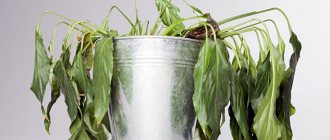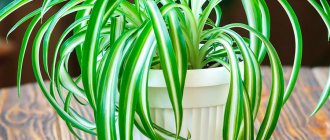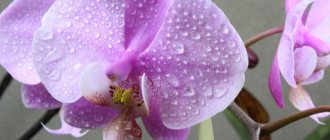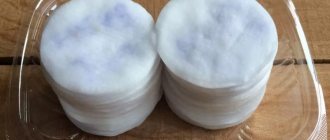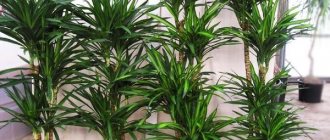A year ago, my mother gave me a beautiful indoor cicas flower. I put it on the windowsill and watered it regularly all year, and recently I noticed that its leaves had turned yellow. I told my mom, she asked if I was feeding the flower? That’s how I learned that houseplants definitely need to be fed. After feeding with organic fertilizers, the color of the cycas gradually became the same. In this article I will tell you why the cicas may turn yellow and how to fix it.
Rules of care
Cycas is a very beautiful tropical plant that looks like a small palm tree. Many gardeners love it for its exotic appearance and the fact that it can decorate any interior. But it is a rather finicky plant to care for. Due to improper care, its leaves begin to turn yellow, curl and fall off. If you don’t catch it in time, he may finally die.
Before purchasing this beautiful indoor plant, you first need to choose a place for it indoors. Since he will feel bad in a dark place, and he will react to frequent movement around the apartment by yellowing of the leaves. The larger it is, the more free space it needs. Since it is a tropical plant, it needs a lot of light, but the lighting should be diffused, as the leaves can get burned from direct sunlight. As a last resort, light twilight is allowed.
If the flower grows very slowly, there is no need to worry, as this is its characteristic. The air in the room should be slightly humid and cool; it does not tolerate stuffy and dry air. In order for the palm tree to always please with its healthy and lush appearance, it must be periodically fed with organic fertilizers without potassium and magnesium in the composition.
If suddenly the leaves of an indoor palm tree turn yellow, then you need to find out whether it has entered a dormant period, which usually begins in late autumn and ends in early spring. During this period, it simply stops growing, and some of its greenery acquires a slightly yellowish tint. If the lower leaves turn yellow and fall off, then there is no need to worry, they have simply outlived their useful life, and new young leaves will soon grow. There are the following factors that can cause the top to turn yellow.
Lack of transplantation or incorrect implementation
Transplantation is an important part of caring for the cicass.
Until the age of 5, the roots of the palm tree grow very quickly, and they become cramped in the pot. That's why they are replanted every year. If the transplant is not done, the crowded conditions will lead to irreversible changes: the leaves of the plant will gradually turn yellow and dry out.
Adult cycad palms grow much slower than young ones. They are replanted every 5 years. The plant, which is repotted regularly, has intense green foliage and looks healthy.
Improper replanting can also cause leaves to turn yellow . If the roots are damaged or the palm tree is deeply buried in the ground, it will be sick for a long time and may even die. In this case, yellowing of its leaves is inevitable.
Water
Cycas is a tropical plant, which means it needs to be watered regularly. If you often forget about watering, and then, to make up for lost time, pour in a lot of liquid at once, then the color of the greenery may turn pale. In winter, when the plant enters its dormant period, there is no need to reduce the frequency of watering too much, otherwise it will suffer from drought. And we should not forget that in winter the indoor air is often dry due to heating. Therefore, in addition to watering, you need to take care of air humidification. You can install either an automatic humidifier or simply place a bun with water next to it.
Even overwatering can cause yellowing of the foliage. Due to excess moisture, its roots suffer first, and then the top begins to dry out. Usually in summer it is enough to water twice a week, and in winter a little less often, depending on the humidity and air temperature. In a cool room, watering is done once a week. And under no circumstances should the soil be allowed to dry out. Before watering the flower, poke your finger into the soil. If it is wet at a depth of 1 centimeter, then watering can be postponed.
Watering is always done with water at room temperature and pre-settled. The liquid is poured directly into the soil, being careful not to get onto the top or into the pine cone. Every month, wipe the leaves with a damp cloth to remove dust. If you transplant into another pot, then there must be drainage at the bottom, which will protect the roots from excess moisture. The pot itself must have drainage holes. Watering is best done through a tray rather than from above.
“Clone” a plant
Cycas propagation is possible in two ways:
- Wait until the shoots - they need to be carefully cut off, coated with a fungicide solution, and planted in the soil (for better germination it should be river sand and peat). The top of the shoots can be covered to increase humidity.
- Propagation by seeds . This method is used only by specialists. If you still decide to purchase a replacement and plant, use the same soil as for replanting plants. All sprouts grow quite slowly, you should not attach too much importance to this. The first leaf in a small shoot may appear only after six months of waiting.
Top dressing
It is recommended to feed the palm tree from mid-spring to the end of summer, since the soil does not have enough nutrients for its successful development. It is quite enough to give her any universal fertilizer or special fertilizers for palm trees twice a month. The main thing is that they do not contain potassium and magnesium. If there is cow dung, it should be diluted with water before use. From the beginning of September, fertilizing should be stopped, as the plant begins to enter a dormant period during this period.
Origin of the cycad
Cycas is a plant from the tropics and subtropics; Australia and the countries of Southeast Asia are considered its homeland. It is believed that this particular plant to some extent became the progenitor of modern spruce trees, as well as ferns and horsetails.
Interesting! Cycas is such an ancient plant that we can safely say that representatives of this genus were closely acquainted with dinosaurs.
It is believed that such longevity of this species in an almost pristine state is due to a rare ancient symbiosis of five different organisms: the cycad itself - the host, a fungus, two types of bacteria, as well as blue-green algae.
The distribution area of the cicada is extremely wide - it does not grow in open ground only in northern Europe and Antarctica. At home, it can also be grown beyond the Arctic Circle.
Selecting a location
The place for the cycas pot should be spacious and well lit. In the absence of light, the leaves will become deformed and lose their bright color. It is recommended to regularly ventilate the room itself, but make sure that the flower does not suffer from drafts. If it cannot be protected from drafts, then during ventilation in winter, the pot with it is taken to an adjacent room or covered with a large piece of cloth.
If you notice that the tips of the leaves begin to turn brown and dry out, it means that it does not have enough fresh air. And yellow spots indicate sudden changes in the air in the room. The most ideal air temperature for cycas is considered to be +17°C.
Cycas home care, what to do if the palm tree does not grow, dries, turns yellow
Yellowing of the leaves of the cycas indicates the presence of problems that must be quickly eliminated so that they do not lead to the death of the plant in the future.
Cycas leaves can turn yellow due to many unfavorable factors.:
- Improper lighting and air humidity;
- Presence of drafts;
- A sharp drop in temperature;
- Irregular watering and fertilization;
- Incorrect or irregular transplantation;
- Pests or diseases.
Insect pests
An indoor flower can suffer not only from improper care, but also from insect pests. Most often he suffers from spider mites or scale insects. Due to their small size, these parasites are difficult to notice immediately. Usually the first sign of their presence is yellowing of some of the foliage.
The fact that the cycas was attacked by a spider mite is evidenced by the presence of a thin web on the leaves. This parasite loves dry air. You can get rid of the insect using both chemicals and folk remedies. You need to start with more gentle folk remedies. Laundry soap is considered the best way to combat insect pests.
First, cover the ground with plastic wrap to prevent soap from getting on it. Then foam is extracted from the soap, which is applied to the entire flower using a sponge and covered with a plastic bag for a day. After a day, remove the bag, carefully wipe all the foliage with a clean sponge, and remove the protective film from the ground. A day later, the procedure is repeated until the parasite disappears completely.
Among chemical preparations, Actellik works well against spider mites. After two weeks, it is recommended to repeat the procedure, since many methods do not work on the eggs and larvae of parasites. The same methods will help in the fight against scale insects as with spider mites. During processing, it is recommended to take the flower to another room where there are no house plants so that they do not become infected from it.
Description of the flower
Cycads can reach a height of 15 m. At home, the flower grows just over half a meter tall. The annual growth is only 3 cm. Outwardly, it is similar to a palm tree due to a single trunk topped with a cap of feathery leaves. Young leaves unfurl in a snail shape, like those of ferns.
Tsikas will decorate any interior
In 12 months, a cycad can grow only one layer of leaves. Young leaves are soft, covered with fluff, they are bright green, but with age they darken, become hard and glossy.
For your information! The cycad is a dioecious plant and can only reproduce by cross-pollination. Houses of sporangia and megasporophylls are rarely formed.
The lifespan of a cycad can be up to one hundred years.
Diseases
Of all the diseases, it most often suffers from root and caudex rot. In this case, the palm tree is carefully removed from the pot, the roots are manually cleared of soil, and the blackened roots are cut off with a clean tool. Then immerse it in a weak fungicide solution for half an hour. After which the cut areas are disinfected with crushed charcoal. Then they put it on a sheet of paper so that the roots dry out. It usually takes about three hours to dry.
Then it is transplanted into a new pot with new soil, not forgetting the drainage layer at the bottom of the container. Before transplanting, the roots are dipped in a special solution for several minutes to help the roots grow. Don't be alarmed if the palm tree drops all its leaves after successful replanting. If the trunk remains hard and healthy, then everything is in order.
Planting a plant correctly is not easy
In order to plant cycas correctly, you must adhere to strict rules, deviation from which can lead to the loss of the plant:
- The place of residence (pot) must be selected strictly according to the size of the plant. The young sprout needs to choose a small space for the development of vital activity, otherwise the soil may become acidic and then the death of the plant is inevitable.
- The soil . You can purchase special soil for palm trees. If this is land, then it should consist of the following layers: turf layer, humus, river sand, leaf soil and peat. The ratio is 2:1:1:1:1.
- The bottom must be filled with drainage.
Useful tips
Although the cicada is considered resistant to external unfavorable factors, if it cannot withstand it, it reacts by changing the color of its foliage. To prevent this from happening, you need to follow some simple rules for caring for it:
- In winter, the pot with it can be in a slightly shaded place, and in early spring it should be moved to a well-lit place. Only in this case will it grow new leaves. But you can not move the pot with it all year round if it is in a place that is comfortable for it.
- In winter, the air temperature in the room should be about +17°C, in no case much higher, otherwise it will suffer from the heat and gradually shed its top.
- Carefully protect it from drafts, which have a detrimental effect on it.
- Watering is done only with warm and settled water.
- Since it grows slowly, it is fertilized only in spring and summer, no more than twice a month. It usually doesn't require many nutrients.
- To ensure that fertilizers last longer, it is better to purchase them in granules.
- Every month from spring to early autumn it is recommended to wash the cicas in the shower.
- It is recommended to replant the young flower every month in a larger pot, not forgetting about drainage. If the plant is five years old, then replanting is done every three years.
- During replanting, it is strictly not recommended to wash the roots, otherwise the flower may die. Replant directly with a lump of soil, adding fresh soil. This procedure is best done in March. If the flower is sick, then transplantation is done at any time of the year.
- For replanting, purchase ready-made soil for palm trees. But you can do it yourself by mixing neutral soil with peat and sand. Everything must be disinfected from all kinds of bacteria and pests.
Types of Cycas
Previously, the cicas genus numbered more than two hundred different species. A certain part died out in the evolutionary process, archaeologists talk about them in their research. Currently, the cycad has approximately ninety varieties. The following copies are considered the most popular.
Cycas Revoluta (drooping cycas)
Cycas Revoluta (drooping cycas)
The leading position is occupied by the Cycas Revoluta, which is actively cultivated at home. The plant is compact, so it is in demand among gardeners. If in the external environment this type of cycad grows up to 6 meters high, then indoors an adult cycad forms no more than seven new leaves during the year. This ornamental crop is very convenient to grow even in a small room.
The drooping cycas has a column-shaped trunk, the height of which is 45 - 55 centimeters. At the top of the stem part there is a crown of palm-shaped or fern-shaped leaves. The foliage of a young plant is soft and pubescent; over time it will become harsh and glossy.
Cones form at the top of the stem. The female type cycas has densely pubescent foliage of a yellow or reddish hue. Cones of loose structure. The cycad is a drooping male type with brown cones and tightly fitting scales.
Cycas Revoluta is a decorative indoor plant; it is considered to be a living decoration of apartments and winter gardens. It will not be so easy for novice gardeners to grow this representative of the flora. To do this, it is necessary to study in detail how to care for the plant at home at various stages of development.
Cycas crescent
The cycad received this name because of the curved shape of the leaf, the upper side of which is glossy and shiny, and the lower side is matte. He is originally from Madagascar and India.
Sago is obtained from this crop by extracting it from the stem core. Sago is considered a valuable product for the population of many countries.
The sickle cycas is unpretentious to temperature conditions. Loves well-lit places indoors. Watering is moderate, in winter - insignificant. The plant is replanted every five to seven years if the pot size has become small. They are often propagated by seeds in the spring. Can be propagated by cuttings, which are formed from side shoots. Cuttings need fertile soil and a room temperature of at least +25°.
Cycas snail-shaped (curled)
Cycas snail-shaped (curled)
Australia and India are considered to be the birthplace of the plant. Cycas snail-shaped is distinguished by its large dimensions. Its trunk is column-shaped, reaching a height of up to three meters. Leaves 1–2 meters long are collected in bunches. The cone-shaped top appears in any month of the year. The number of leaves in it is different: 15 – 26 pieces (depending on age and season). Young leaves grow vertically, becoming large, they begin to bend towards the ground, positioned horizontally.
The beauty of this representative of the flora lies in the feathery, large leaves, divided into many narrow leaf lobes attached to the central vein. Such a narrow-lanceolate segment has a length of 25 cm, its width reaches 1.5 cm. The segments are located densely to each other. The central vein of the main leaf has short spines.
This type of cycad reproduces by seeds and vegetatively. Side shoots appear all year round on the trunk of an adult plant.
Cycas curlata is an ornamental, evergreen perennial. Very valued in the tropics and subtropics. The elegant plant is especially popular in Florida.
Cycad Tuara
Cycad Tuara
The plant is native to Madagascar. Cycas is widespread in Kenya, Tanzania, Mozambique, Comoros and Seychelles. Prefers sandy soil and likes to grow on coral formations. Under natural conditions it grows about 10 meters. The average height of a tree-like stem is usually 4 meters. The top often branches.
The foliage is from 150 to 210 centimeters long, has a dark green color, and is semi-glossy. Pollen ripens in orange or brown oblong cones. The seeds are large, reaching the size of a goose egg (50-60 mm).
Siamese Cycas
Indochina is the birthplace of the Siamese cycas. Now it can be found in Thailand, southern Vietnam, and in the forests of Burma. We can say about the plant that it is miniature - the height does not exceed 2 meters.
The trunk is in the shape of a tuber: the lower part is thickened, from the middle to the top it narrows, becoming much thinner. The spiny, veiny petioles are yellowish in color and covered with feathery leaves. The leaves on them are narrow, pointed, of medium length, approximately 10 cm, 5 mm wide. The color of the leaves is bluish-white.
Cycad Rumpha
Cycad Rumpha
The tallest plant in the cycad family. The trunk, like a column, grows up to 15 meters in height. The leaves are linear in shape, 30 cm long, 2 cm wide, densely arranged on the petioles, forming pinnate leaves two meters long. The leaves grow both symmetrically and in bunches; from a distance, Rumpha's cicada appears unkempt. This cycad grows faster than all its relatives. It lives on the shores of the island of Java, as well as Andaman and Nicobar. It owes its origin to Sri Lanka.
Video: how to germinate at home, prune shoots and care for cycas
The amazing cycas plant has both positive and negative features. On one side of the scale there is unpretentiousness and exotic decorativeness, on the other there is toxicity, the requirement for a spacious place and relative high cost. If the decision is made “for”, then beginning flower growers can grow it.
- Author: Diana Nikiforova
I never cease to be convinced that life is wonderful. Rate this article:
- 5
- 4
- 3
- 2
- 1
(8 votes, average: 3.9 out of 5)
Share with your friends!
Purchase
How to choose in a store
Take your purchase seriously - only under this condition will you bring home a plant that is healthy and without flaws.
- The middle of the leaf corolla should be dense, without signs of rot. The same applies to the trunk - strong and dense, hard at the base of the leaf petioles.
- Choose a specimen that has produced at least 3 healthy and well-formed leaves.
- Pay attention to the buds: they should be of an even, natural color, without severe damage.
First steps after purchase
Plant adaptation is not an empty phrase. Often the cause of death of a new green pet is improper care after purchase, so remember a few basic rules :
- Lack of haste and accuracy are your main assistants.
- When you bring a plant into your home, do not rush to immediately remove its packaging. Let the flower get used to the “evening out” of temperatures. Place the pot in the coolest place in the house, out of light, and wait 30-40 minutes.
- You, of course, carefully examined the cicadas in the store before you bought them. Do this again at home. If during transportation any leaf is wrinkled, withered or injured, remove it. It will no longer be possible to restore them, and they will “draw resources and strength” onto themselves. Treat the cut areas with crushed activated carbon.
- It will be possible to water in 2-3 days. The exception is a completely dried substrate.
- The first few weeks are called quarantine. This way you will protect the rest of your indoor plants from accidental pests that you brought with your new flower. It will be easier for you to notice them on a lonely flower. Do not place the pot next to heating devices, in an area of draft or active air movement.
Cycas is an expensive plant. The price for an adult specimen can reach several thousand rubles.
Reproduction
Growing from seeds
Obtaining offspring from cycas using seed material is an extremely difficult task.
You can’t buy the seeds themselves in the store, so go straight to the nearest greenhouse or floriculture farm. Cycas seeds are very large and, as a rule, are sold one per package and are quite expensive. Remember that they retain their germination capacity only for 3 years . Keep the seed material in warm water or any growth stimulant, place it in separate containers, pressing lightly, but not burying it in the ground, and water it moderately.
Reproduction by children (shoots)
The young shoots that appear on the trunk of the cycas look like bulbs. They are cut off, the cut sites are treated with crushed activated carbon (charcoal, garden pitch, paraffin), the shoots are planted in loose nutritious soil (possibly in perlite or sand) and watered moderately. You will have to wait a long time for rooting - from 6 to 9 months.
